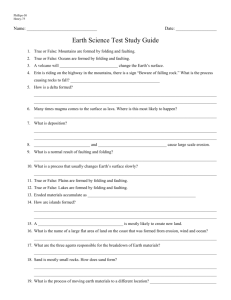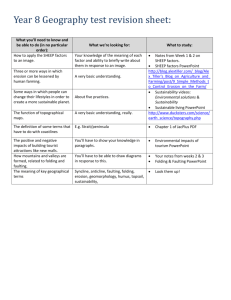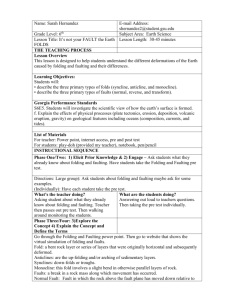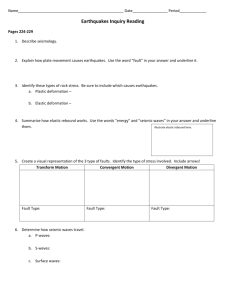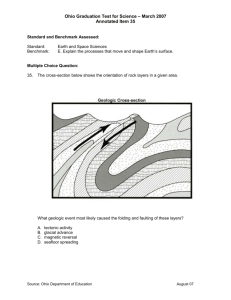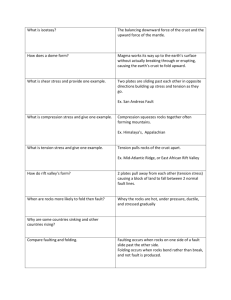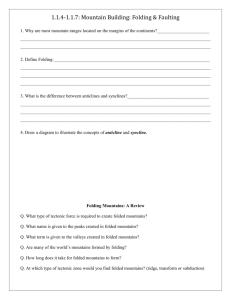Rocks & Landforms
advertisement
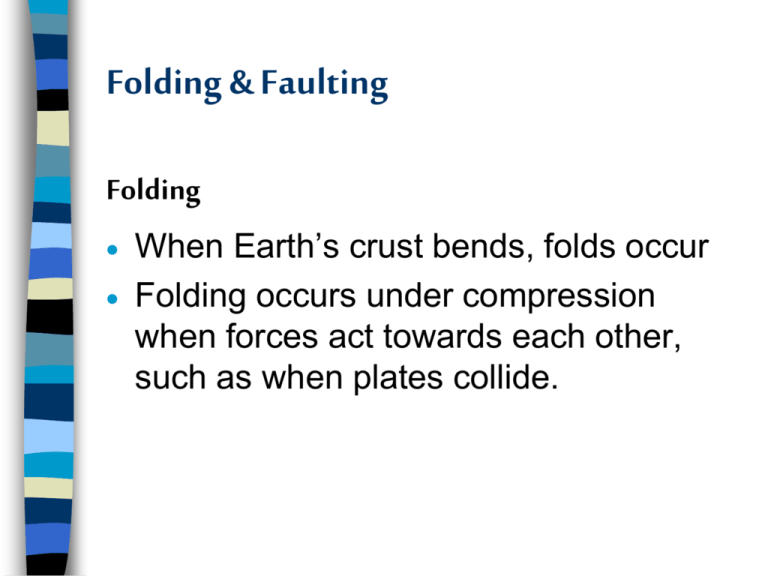
Folding & Faulting Folding When Earth’s crust bends, folds occur Folding occurs under compression when forces act towards each other, such as when plates collide. Folding & Faulting Definitions Compression Is a process of forcing something into smaller compass, reducing it in volume by pressing it together Tension Is a pulling force, tending to stretch, to cause an extension of a body or to restore the shape of an extended elastic object A fold is a bend in the rock strata. Folding: Is a type of earth movement resulting from the horizontal compression of rock layers by internal forces of the earth along plate boundaries. The downfolds are termed synclines A upfold are termed as anticlines Folding & Faulting Parts of a fold : layers of rocks of continental crust bent in upfolds called anticlines & downfolds called synclines. Generally, anticlines form fold mountains & synclines form valleys Folding & Faulting There are 2 main fold mountains systems in the world: Old and young fold mountains, based on their geological age. A) The old Caledonian fold mountains (formed 400 million years ago) B) The Circum-Pacific Region surrounding the pacific ocean (formed within the last 100 million years) Folding & Faulting amount of folding depends on force used by movement of the plates. When folding is very complex, there is little relationship between anticlines & mountains & between synclines & valleys. Anticline-Calico Ghost Town, CA Anticline in Utah Syncline Syncline Folding Folding & Faulting Faulting Faulting occurs when Earth’s crust cracks: 1. under tension ( when forces are acting opposite each other ) causing layers of rocks to stretch & crack ; a normal fault develops & one block moves down relative to other block in direction of fault to form an escarpment The process by which rocks break and move or are displaced along a fracture Folding & Faulting A – Hanging wall B - Footwall Folding & Faulting Hanging wall in Hanging Wall State Park, North Carolina Folding & Faulting Footwall Bolivia Folding & Faulting Types of faults - NORMAL FAULT The movement of a normal fault causes the hanging wall to move down relative to the footwall. Folding & Faulting Normal Fault – Notice how the hanging wall has slid down (on the left) at the fault. Match the dark layers to track the movement. Folding & Faulting Types of faults - REVERSE FAULT A reverse fault causes the hanging wall to move up relative to the footwall. Folding & Faulting Reverse Fault – Notice how the foot wall (on the left) has slid down at the fault. Match the brown colored layers to track the movement. Folding & Faulting Types of faults - STRIKE SLIP FAULT A strike slip fault occurs when opposing forces cause rock to break and move horizontally. Folding & Faulting Strike slip Fault – Notice how the ground no longer matches at the fault.
